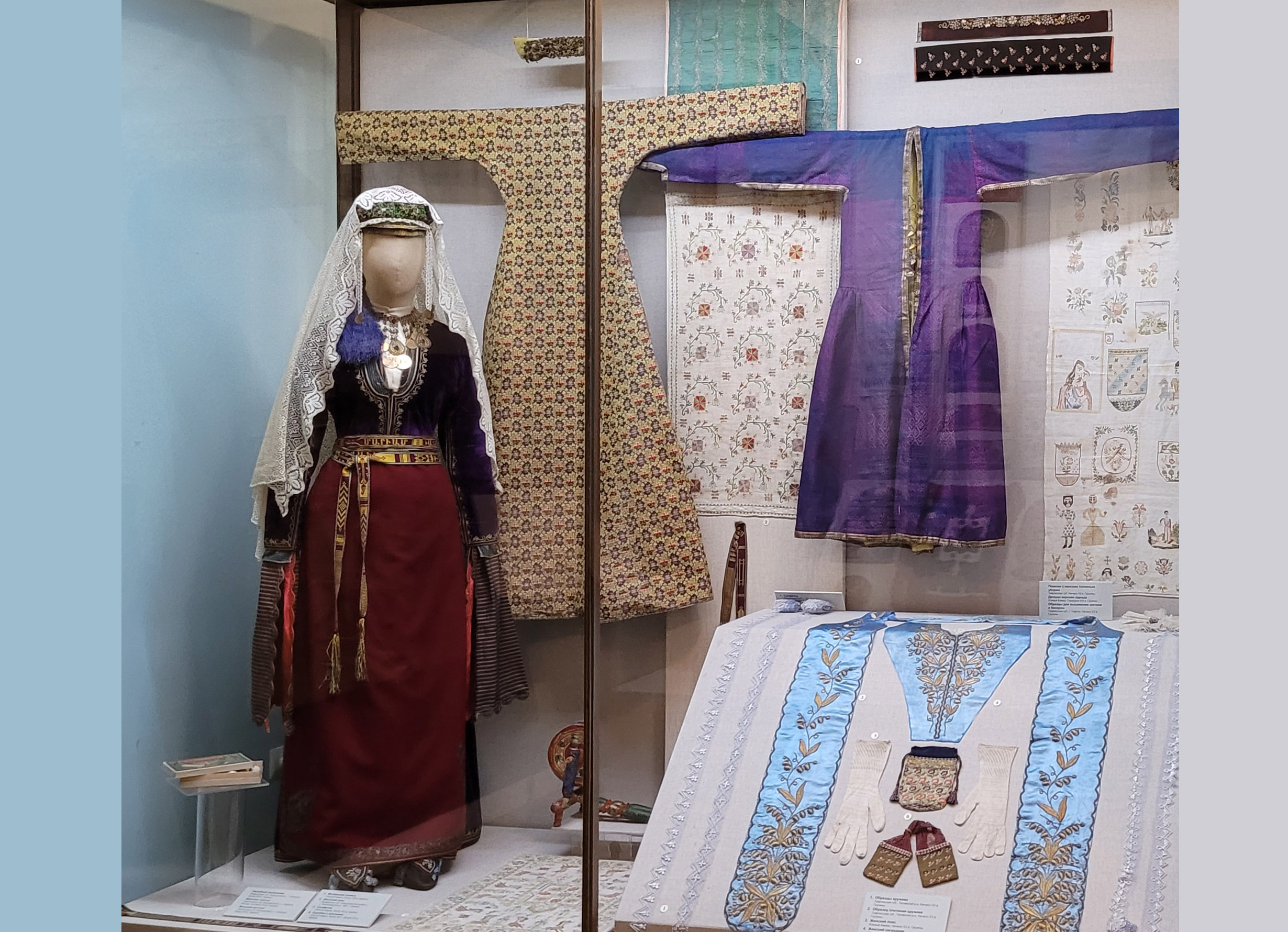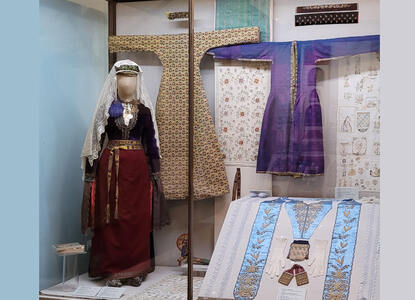Silk in the Traditional Culture of the Peoples of Caucasus

The traditions of silk production in the Black Sea area of the Southwestern Caucasus, which includes the historical lands of Armenia and Georgia, are inextricably intertwined with the great heritage of Byzantium; the aforementioned sericulture province can be considered a part of Asia Minor. The heavy brocade fabric production in certain textile centers of the region, such as Trebizond and Erzurum, can prove that. Peculiar enough, brocade patterns were under European influence during the Early Modern Period; the baroque ‘French rose’ became one of the leading ornamental motifs.
Kars, Batumi, Tiflis, Kutaisi, Akhaltsikhe, and other major cities had a busy trade traffic of various goods, including silk raw materials and silk fabrics, which contributed to the distribution of silk garments among the residents. Urban culture dictated high standards for cultural entertainment, thus the home lifestyle prescribed exercising one or another kind of decorative and applied arts. For example, silk embroidery was a common type of women’s handiwork that was supposed to decorate primarily accessories and additional elements of women’s costume, like breastplates, belts, etc. Men’s regional costumes, too, included silk elements: socks, as well as gaiters similar to European stockings, a wide silk sash, in the folds of which men carried knives, purses, and snuffboxes; all of these distinguished the high social status of their owners.
Forehead ornament. Akhaltsikhe, Akhaltsikhe County, Tiflis Governorate. Late 19th century. Armenians
Women’s dress. Akhaltsikhe, Akhaltsikhe County, Tiflis Governorate. 2nd half of the 19th century. Armenians
Women’s attire. Akhaltsikhe, Akhaltsikhe County, Tiflis Governorate. Late 19th century. Armenians
1. Spooling wheel. South Caucasus. Late 19th century. Armenians
2. Women’s belt. Alexandropol, Alexandropol County, Erivan Governorate. 1891. Armenians
3. Napkin. South Caucasus. Late 19th century. Armenians
4. Cocoon box. South Caucasus. Late 19th – early 20th century. Armenians
1. Napkin. Tbilisi, Georgian SSR. 1st half of the 20th century. Georgians
2. Napkin. South Caucasus. Late 19th century. Armenians
Bands for women’s headgear. Tiflis Governorate. Early 20th century. Georgians
Children’s outerwear. South Caucasus. Mid-19th century. Georgians
Silk and beads embroidery samples. Tiflis, Tiflis Governorate. Early 20th century. Georgians
1. Lace samples. Telavi District, Tiflis Governorate. Early 20th century. Georgians
2. Lace braiding sample. Telavi District, Tiflis Governorate. Early 20th century. Georgians
3. Women’s belt. South Caucasus. Early 20th century. Georgians
4. Women’s breastplate. South Caucasus. Early 20th century. Georgians
5. Gloves. Kutaisi Governorate. Early 20th century. Georgians
6. Purses. Tiflis Governorate. Early 20th century. Georgians



